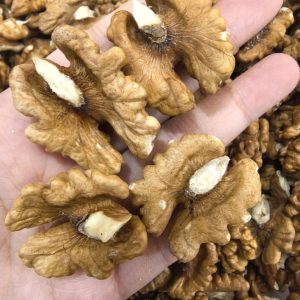
Making coconut oil at home is a straightforward process, and with a few simple steps, you can create your own pure, natural coconut oil without relying on commercial products. Here’s a method that requires only a few ingredients and tools, ensuring a high-quality product that retains all the natural goodness of coconuts.
What You’ll Need:
- 3-4 mature coconuts (the older, the better, as they contain more oil)
- Water
- A blender or food processor
- A fine cheesecloth or strainer
- A large bowl
- A spoon or spatula
Step 1: Preparing the Coconuts
Start by cracking open the mature coconuts. You can do this by tapping them firmly with a hammer or using the back of a heavy knife. Once the shell is broken, drain the coconut water and set it aside. It can be consumed or used in other recipes.
Next, carefully separate the white coconut meat from the shell. Use a sharp knife or coconut scraper for this. After the meat is separated, rinse it with water to remove any remaining shell debris.
Step 2: Blending the Coconut Meat
Cut the coconut meat into small pieces, which will make blending easier. Add the coconut pieces into a blender or food processor, along with some water. Typically, for every 2 cups of coconut meat, you should add 1 cup of water. This helps the meat blend smoothly and extracts the coconut milk efficiently.
Blend the mixture until you achieve a thick, creamy consistency. Depending on the strength of your blender, this could take a couple of minutes. Make sure to pause and scrape down the sides if necessary, ensuring all the coconut is fully processed.
Step 3: Extracting the Coconut Milk
Once the coconut is blended into a smooth paste, it’s time to extract the coconut milk. Place a fine cheesecloth or a strainer over a large bowl and pour the coconut mixture into it. Gather the cheesecloth and squeeze out as much liquid as possible. This is the coconut milk, which contains the oil.
Repeat this process with any leftover coconut pieces in the blender, squeezing out every drop of milk. The more thoroughly you extract the milk, the more oil you’ll be able to obtain later.
Step 4: Separating the Oil
Now that you have your coconut milk, it’s time to let nature do its work. Leave the bowl of coconut milk at room temperature for about 24 hours. During this time, the oil will start to separate from the rest of the liquid. You’ll notice a thick, creamy layer forming on top, which is a combination of coconut cream and oil.
After 24 hours, place the bowl in the refrigerator for a few hours to further solidify the cream. Once the cream hardens, you can gently scoop it out, leaving behind the water. This water can be discarded.
Step 5: Heating the Cream to Release the Oil
To finally extract the oil, place the hardened cream in a pan over low heat. As the cream warms up, it will start to melt and release the coconut oil. Stir the mixture gently, and you’ll see the oil separating from the solids. Continue cooking on low heat until all the water has evaporated, and you are left with clear coconut oil.
Once you’re satisfied that the oil is fully separated, carefully strain it through a fine sieve or cheesecloth to remove any remaining solids.
Step 6: Storing the Coconut Oil
Allow the freshly extracted oil to cool before pouring it into a clean, airtight container. Store it in a cool, dry place. Coconut oil can last for months without refrigeration, but for extended freshness, keeping it in the fridge can help preserve its quality.
Why This Method Works
This cold-pressed, natural extraction method retains the beneficial properties of coconut oil, including its rich lauric acid content, which is known for its antimicrobial properties. Unlike some commercial extraction processes that use heat and chemicals, this method ensures your coconut oil is as pure and organic as possible.
By following this simple process, you can easily make high-quality coconut oil at home without any specialized equipment. The result is a versatile oil that can be used in cooking, skincare, and haircare, giving you full control over the purity and quality of the product.
Final Thoughts
Making your own coconut oil is not only cost-effective but also rewarding. You get a pure, unrefined product free from additives and preservatives. Plus, the process allows you to experience the full aroma and flavor of fresh coconut oil, making it a valuable addition to both your kitchen and beauty routines.




